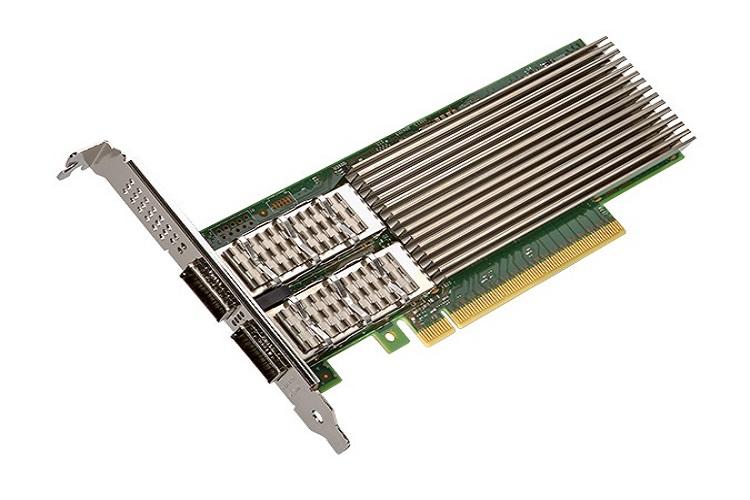
At Intel’s “Data-Centric Innovation Day,” the company revealed a broad portfolio of new processors and platform technologies to move, store and process data, including 2nd-Generation Xeon processors, Optane DC persistent memory, high speed Ethernet and Agilex FPGAs. These new solutions are targeted for applications in cloud computing, network infrastructure and intelligent edge applications.
The second generation Intel Xeon processors feature significant enhancements in performance, built-in AI inference capabilities, increased memory bandwidth and better security. The processors integrate Intel Deep Learning Boost (Intel DL Boost) technology to accelerate AI inference workloads like image-recognition, object-detection and image-segmentation in datacenter, enterprise and intelligent-edge computing environments. Intel has worked extensively with ecosystem partners to optimize AI frameworks (TensorFlow, PyTorch, Caffe, MXNet and Paddle Paddle) and applications to take advantage of Intel DL Boost technology.
Intel also unveiled several other processor families, including the 56-core, 12 memory channel Intel Xeon Platinum 9200 for high-performance computing (HPC) workloads, AI applications and high-density infrastructure. Built-in support for the Intel Optane DC persistent memory in these new processors enables users to leverage upto 36 TB of system-level memory capacity, when combined with traditional DRAM, in an eight-socket system. This represents a 3-times increase in system memory capacity when compared with the previous-generation Intel Xeon processors.
In collaboration with communications service providers (CSPs), Intel has developed new family of network-optimized Xeon processors to handle higher subscriber capacity and reduce bottlenecks in network function virtualized (NFV) infrastructure. All the new processors also have additional hardware-enhanced security features, including side channel protections. Targeting computing at the edge, security and storage solutions, the Xeon D-1600 processor is a highly-integrated system-on-chip (SoC) designed for dense environments where power and space are limited. Intel has also unveiled its next-generation of 10nm FPGAs that are targeted for applications in edge computing, networking (5G/NFV) and datacenters. The new Ethernet 800 Series adapter with Application Device Queues (ADQ) technology, and up to 100 Gbps port speeds, is aimed at cloud, communications, storage and enterprise market segments. ADQ increases application response time predictability, while reducing application latency and improving throughput.
Intel is also aiming to disrupting the memory and storage market with a slew of new technologies including the Optane DC persistent memory, Optane SSD and QLC 3D NAND SSD products. The Optane DC persistent memory is a new class of memory and storage technology that is designed specifically for data center applications. It significantly improves the performance of memory intensive applications--without dramatic increase in costs. The Intel SSD D5-P4326 (Intel QLC 3D NAND) is an addition to Intel’s PCIe QLC NAND SSDs for the data center. Using 64-Layer QLC technology (4 bits/cell), the product family delivers large affordable capacities for read-intensive cloud workloads. The drive and innovative “ruler” form factor enables cost-effective replacement of HDDs for warm storage (upto 1PB of storage in 1U design).

 In
In
Comments
Achat Furosemide https:/
Achat Furosemide https://agenericcialise.com/ - best generic cialis Avodart In Singapore <a href=https://agenericcialise.com/#>buying cialis online safe</a> Propecia Worked For Me Thinning Hair
Add new comment